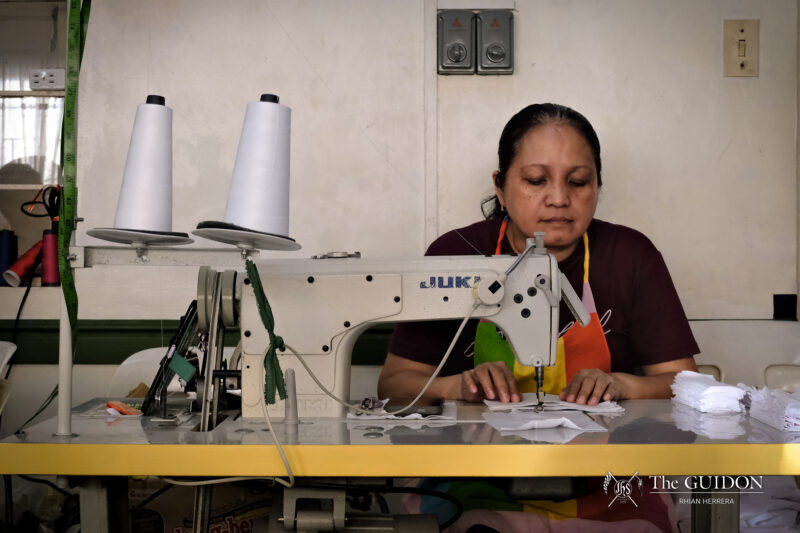Imagine a warm, steaming plate of adobo and a heaping serving of soft, fluffy rice. This comforting image will probably be accompanied by the familiar walls of home, and a dining table full of family and friends. This is Filipino food as we know it—and soon, it may be Filipino food as the world knows it.
Filipino cuisine has been shaped by the history, culture, and geography of our country. Its unique taste and variety may just be the reason why it could evolve into the next culinary phenomenon.
According to Food Network and Bloomberg, Filipino food is set to become one of the next culinary trends of 2017. Even Anthony Bourdain, an American chef and television personality, is calling our food “underrated,” and raving about the crowd-favorite sisig. It is always an exciting time to be a Filipino, but now, the spotlight is being directed on what is perhaps the most exciting part of local life: The Filipino kitchen.
Mixing the ingredients
Defining Filipino food has never been simple. According to chef Annalisa Mariano, instructor of Filipino, American, and European Cuisine at the Center for Culinary Arts Manila, Filipino food is a “Malay-based cuisine with very distinct Spanish influences.”
The complexity of our cuisine can be traced back to our colorful history. “Filipino food is a fusion already. We cannot define it without the influences of the countries that colonized us,” Mariano says. These mainly include Malay, Spanish, Chinese, and Japanese influences.
Geography is also an important factor in developing Filipino cuisine. “We’re an archipelago, so we can say that Filipino food is a coastal cuisine,” she explains. This means that the primary source of protein among the Philippine islands is seafood. True enough, the fishing industry remains to be one of the main sources of livelihood in the country.
Moreover, Filipino culture, lifestyle, and environment have also had a hand in shaping the way they prepare food. For one, Filipinos traditionally did not bake their food. “The must-haves of the Filipino kitchen are the kawali (frying pan), kaldero (pot), and kalan (stove),” Mariano says. “The oven [was] not really part of the basic setup.”
Maya Vicencio (3 BS MAC), executive vice president of Cuisina, a student organization for food appreciation, stresses the importance of preservation in a tropical country such as ours: “A lot of our cuisine [is] meat saturated in either vinegar or salt. Filipinos [before] would use [traditional] preservation techniques such as salting, sun drying, or using an [acid] to preserve meats.”
Furthermore, Filipino cooking revolves around what Cuisina’s advocacy vice president, Jayson Medina (3 BS APS-MSE), calls the “no-wasting policy.” He explains, “[Filipinos] try to use each and every part of the animal and plant to make food.”
As a result of the Filipino’s resourcefulness, Filipino food preparation is fairly inclusive. “[We] eat a combination of a meal [that is either] pinirito [fried], inihaw [grilled], or may sabaw [has soup],” Mariano says. “And then of course, the main focus of Filipino food is the rice.”
Beyond our love for rice, another defining characteristic of Filipino food is the way it is served. “Filipino [dining] is deeply rooted in tradition and family,” says Angelique Sanvictores (2 BS PSY), Cuisina’s assistant vice president for member relations. “This [explains] why most Filipino restaurants offer for-sharing meals or group meals.”
All around feast
Migration is one of the greatest contributors to culture. Thus, history plays a large role in the Filipino way of cooking, serving, and food-naming. The widely-loved breakfast food arroz caldo and the sinful snack chicharon are of Spanish influence. Even the concept of merienda, or the afternoon snack, was taken from them.
On the other hand, the American barbecue influenced how Filipinos grill food. They also introduced the Philippines to the concept of the fast food industry people know today. Local fastfood chain Jollibee has made its way across the globe, opening stores around Southeast Asia and the United States.
However, Sanvictores observes that despite these international influences, these food types still cater to the local palate. “They have to taste Filipino,” she says. “Spaghetti here is sweet, and everything comes with rice.”
Influences on Filipino cuisine comes from various sources. Jose Rueda (4 BS ME), Cuisina’s finance vice president, says that “[Filipino food is] a set of different cuisines, [which is as] diverse as the different regional Filipino cultures.”
Thus, the way people prepare dishes in the north may have aspects in taste that differ from those in the south. In some parts of the Philippines, people add guavas to sinigang, which most people know as sour rather than sweet.
Taking on the world
Just as other cultures have influenced Filipino cooking, the question now is whether or not Filipino culture has done the same to the cuisine of other countries. According to Mariano, social media is one of the largest factors that contribute to the spread of Filipino culinary influence.
Buzzfeed released an article on must-try Filipino foods. Meanwhile, Vogue also put out an article talking about the emergence of Filipino cuisine. Articles like these show a growing international interest in Filipino food.
Some, however, still find our food as bizarre. For instance, some criticized United States First Daughter Ivanka Trump when she served hotdogs and marshmallow on a stick at a children’s birthday party. For the Filipino community, this is quite common at children’s parties, along with sweet spaghetti and chicken lollipops. However, this was considered an oddity for foreigners.
This shows possible obstacles to the spread of Filipino cooking. Mariano states that closed-mindedness or lack of adventure to try new food are just some of the barriers faced by those who are not familiar with Filipino cuisine. Filipino food is usually hearty and compact with flavors of spices and sauces. In her experience as a teacher of European Cuisine, she noticed that foreigners often prefer “blander” tastes. Other times, health consciousness is their reason.
Another possible hindrance, according to Mariano, is the availability of ingredients. Mariano shares her experience of a Filipino food festival in Australia where she prepared dishes using ingredients from there; as a result, the end product tasted differently.
Cuisina founder and president Cess Yu (4 BS CTM) says that “Filipinos are already situated around the world and they will be the ones to bring our cuisine to other countries.”
Mariano also reports the positive reception of Filipino cooking from her students who own restaurants abroad, and from the Filipino chefs that compete in international competitions. The fascination in Filipino cuisine remains in the minds of foreigners.
With modern technology, this fascination will only continue to grow. Perhaps, it may go as far as the reintroduction of some styles of cooking only popular in certain provinces. One thing is for certain: Filipino food is unique in its diversity, and this may just be what propels it into the international spotlight.







